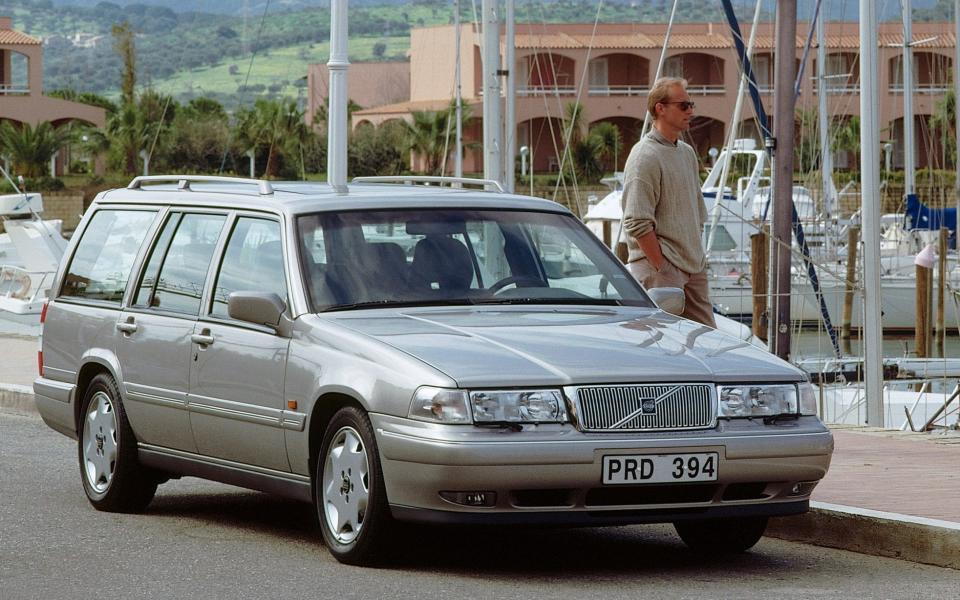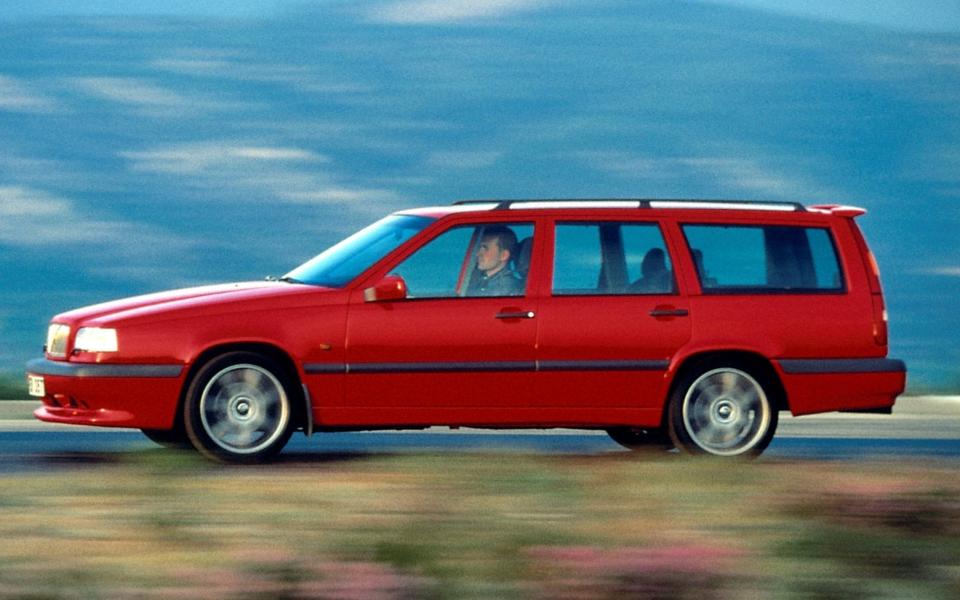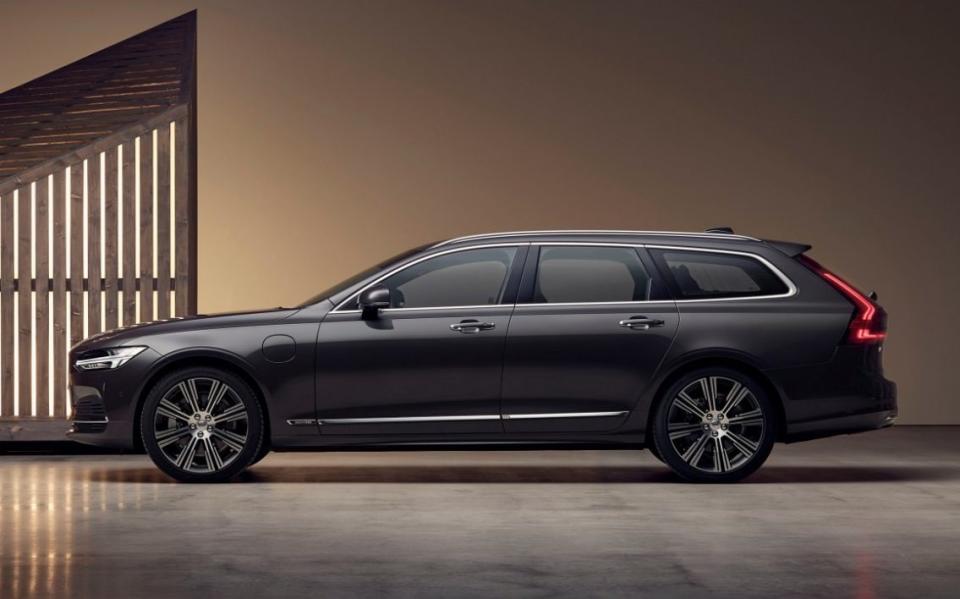In response to popular demand, the company says, Volvo is bringing back its station wagons after announcing in August 2023 that it would no longer produce its V60 and larger V90. We delve into the station wagons of the past to choose our top six cars that inextricably linked the Swedish brand with enormous load carriers.
The granddaddy of them all: The Duett

Volvo was early on the station wagon market, but not a pioneer. The very first Volvo estate cars were actually built by independent body shops using the PV444 as a basis. Volvo discovered the potential for a regular car that combined the dual role of hauling loads with comfortable family transportation and introduced the PV445-based Duett in 1953.
The Duett was a two-door, but instead of the sloping Volkswagen Beetle-like rear of the regular PV445, it had a square roof, with access to the huge boot via two side-hinged doors. Large families could specify up to seven seats and, for added practicality, the rear floor was of varnished wood to make it easier to slide boxes in and out.
Although the styling was old-fashioned even for the time, the Volvo gained a reputation for being well built, durable and comfortable. It remained in production until 1969, when it was definitively prehistoric.
Top facts
The Duett was immortalized in 1997 when it was given its own postage stamp in Sweden.
Safety first: the Amazon


Building on the success of the Duett, one of the first Volvos sold in the US, the Amazon was launched at the 1959 New York Motor Show. The station wagon version followed three years later.
This was much more modern than the contemporaneous Duett. For starters, it had rear doors, while the two-piece tailgate was hinged at the top and bottom instead of the sides. The Amazon was also the first production model to come with front seat belts as standard.
The only problem was that the car was not officially allowed to be called Amazon. That name had already been registered by a German engine company for worldwide use, so Volvo could not use it outside Sweden, prompting the company to introduce its three-digit naming strategy. The Amazon became the 220 series in estate form.
Top facts
The Volvo 220 became the first foreign car to be used by British police. In 1965, Hampshire Constabulary fielded a white 1800 model after the Swedish engine won a shoot-out with the Citroen DS19 Safari and Humber Super Snipe Estate.
The trendsetter: the 140 series


Launched in late 1968, the 145 station wagon of the Volvo 140 series featured a nearly vertical, upward-hinged tailgate that would become an iconic car shape over the next four decades.
Although the 145 was considered quite modern and austere at launch, it featured several improvements that helped Volvo strengthen its position as a manufacturer of super-safe cars. The front and rear disc brakes had a triple split in the braking circuit, so if one failed, braking would still be sent to the other three wheels. And there was an early form of ABS anti-lock brakes.
Later, the 140 Series would be equipped as standard with head restraints, retractable seat belts with inertia reel and seat belt reminders.
Production ended in 1974 when the 140 Series became Volvo’s first million-plus seller. But it wasn’t over yet. Its successor, the 240 series (the station wagons were the 245 and 265) shared many of the features of the 140 series, including the bodywork and therefore the boxy appearance. This remained in production until 1993.
Top facts
The 140 series introduced the Volvo naming strategy where the first number was the series, the second the number of engine cylinders and the third the number of doors.
Latest classic: the models 940 and 960


The Volvo 940 and 960 models were the last of what many consider to be the classic Volvo estate cars. Launched in 1990, they were heavily based on the philosophy of the outgoing 740 series. However, increased comfort and interior space ensured that Volvo estate cars would continue to be a hit with antique dealers, dog owners and families with lots of possessions the world over.
The last of Volvo’s rear-wheel drive estates, the 940 achieved almost legendary status for its practicality and versatility.
Most important facts: The 940 series was relaunched as the S90 and V90 (S for sedan, V for versatility, if you were wondering). The only change to the car was an improved air conditioning system.
The first Volvo Estate you really wanted: the 850 Estate


Confusingly, Volvo released its 850 model in the early 1990s around the same time as the 940 series. In every respect this was like its sibling, but it had front-wheel drive, a five-cylinder engine and integrated SIPS side protection. Then Volvo turned the desirability dial to 11 with the 850 T5-R.
A sweet-sounding exhaust note, a beautifully understated appearance with five-spoke alloy wheels and side skirts made the T5-R an instant hit in the guise of a sedan and station wagon. Then Volvo shifted the dial again: it became the first mainstream car manufacturer to race a station wagon.
The 850 Estate, which competed in the British Touring Car Championship in 1994, may not have won any races (its best finish was fifth), but it certainly triumphed in the PR battle. Suddenly people wanted a Volvo Estate instead of simply needing one. After the limited run of T5-Rs ended, Volvo launched the equally spirited 850R in 1996.
Top facts
Porsche helped tune the engine, transmission and other parts of the T5-R, such as the sports seat inserts.
The latest version of a classic: the V90


For 2016, Volvo launched its new V90, saying goodbye to the boxiness of nearly five decades of station wagons. Instead of an upright tailgate and slab sides, the new model had curves. And that meant a significantly smaller trunk than its predecessors.
However, what the V90 lacked in size compared to German premium rivals, the V90 made up for in comfort: Volvo’s ‘Relaxed Confidence’ approach, which avoided the firm and sporty ride of competing models.
Top facts
The luggage compartment of the latest V90 has only about three-quarters the capacity of the 940 model it replaced.